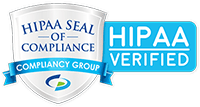
source: Minihaa, via Wikimedia Commons
What’s the saying? “A spoonful of sugar can help the medicine go down…” but what about 17 spoonfuls? On average Americans eat 17 teaspoons of sugar a day. Eating that much sugar can result in actually needing medicine due to the following health problems: high blood pressure, type 2 diabetes, heart disease, and liver disease. In this edition of Healthy Bytes we’ll teach you how to read the food labels so you can spot the hidden sugars in your food.
We all know sugar by it’s obvious name Sugar, but what about it’s many aliases? By now we are familiar with High Fructose Corn Syrup and even Corn Syrup, but what about the Maltose, or Barley Malt, many wouldn’t guess those are other names for sugar. According to the University of California San Francisco, there are at least 61 different names for sugar that can be listed on food labels.
| Sugar Aliases | ||
|
Agave nectar |
Dehydrated cane juice | Maltol |
| Barbados sugar | Demerara sugar |
Maltose |
|
Barley malt |
Dextrin | Mannose |
|
Barley malt syrup |
Dextrose |
Maple syrup |
|
Beet sugar |
Evaporated cane juice |
Molasses |
|
Brown sugar |
Free-flowing brown sugars |
Muscovado |
|
Buttered syrup |
Fructose |
Palm sugar |
|
Cane juice |
Fruit juice |
Panocha |
|
Cane juice crystals |
Fruit juice concentrate |
Powdered sugar |
|
Cane sugar |
Glucose |
Raw sugar |
|
Caramel |
Glucose solids |
Refiner's syrup |
|
Carob syrup |
Golden sugar |
Rice syrup |
|
Castor sugar |
Golden syrup |
Saccharose |
|
Coconut palm sugar |
Grape sugar |
Sorghum Syrup |
|
Coconut sugar |
High-Fructose Corn Syrup (HFCS) | Sucrose |
|
Confectioner's sugar |
Honey |
Sweet Sorghum |
|
Corn sweetener |
Icing sugar |
Syrup |
|
Corn syrup |
Invert sugar |
Treacle |
|
Corn syrup solids |
Malt syrup |
Turbinado sugar |
| Date sugar | Maltodextrin |
Yellow sugar |
Now that you know the many aliases of sugar, let’s talk about where these aliases are showing up. It’s not always in treats like cookies or desserts. You’ll find these sneaky sugars in many processed foods like salad dressings, sauces like ketchup or barbeque, cereals, milk substitutes and canned foods like baked beans or soup.
The easiest way to avoid hidden sugars in your food is by eating whole foods and avoiding processed foods. However, if you are faced with a nutrition label, now you have a guide to help you navigate sugar and all it’s aliases.



